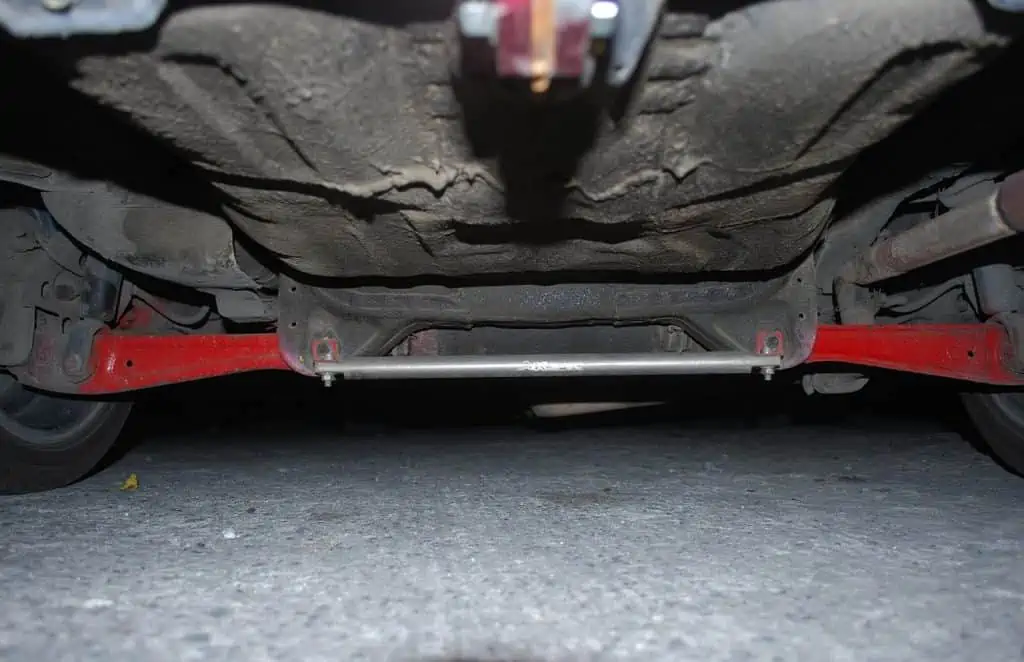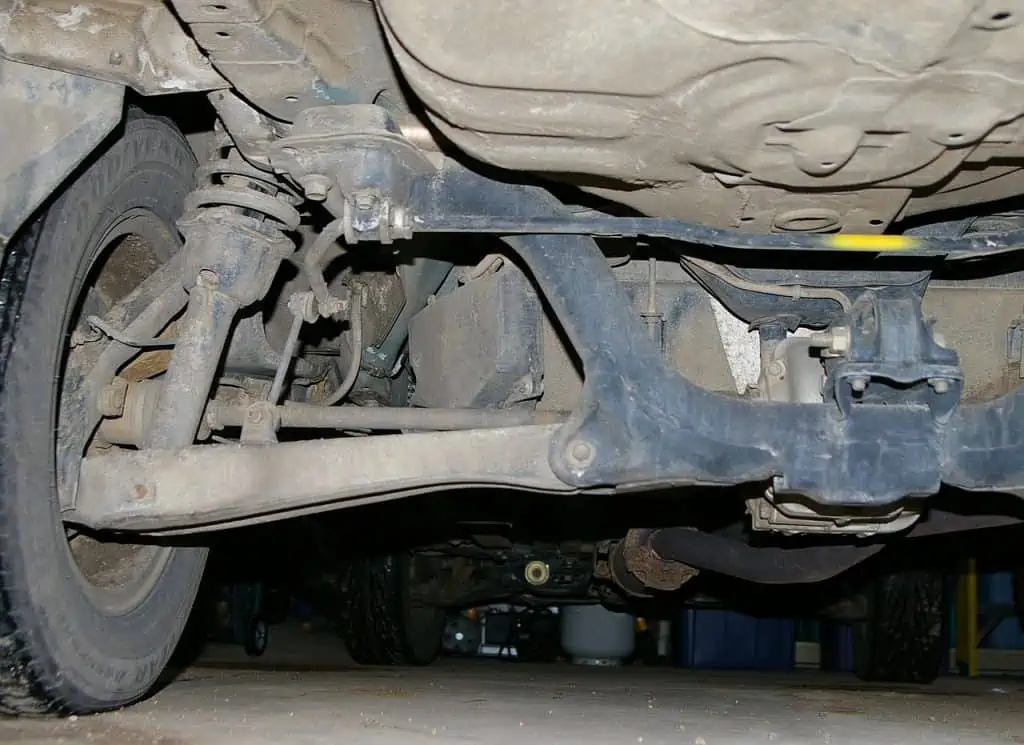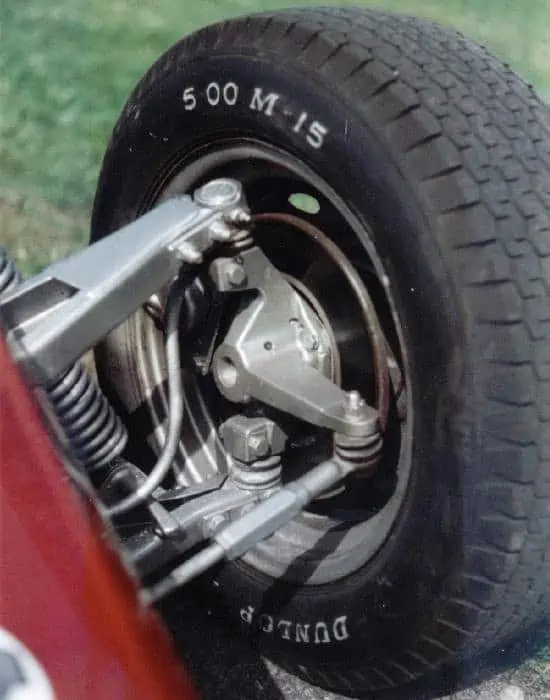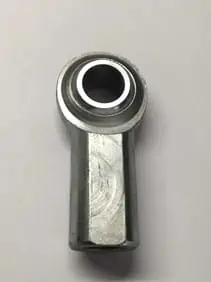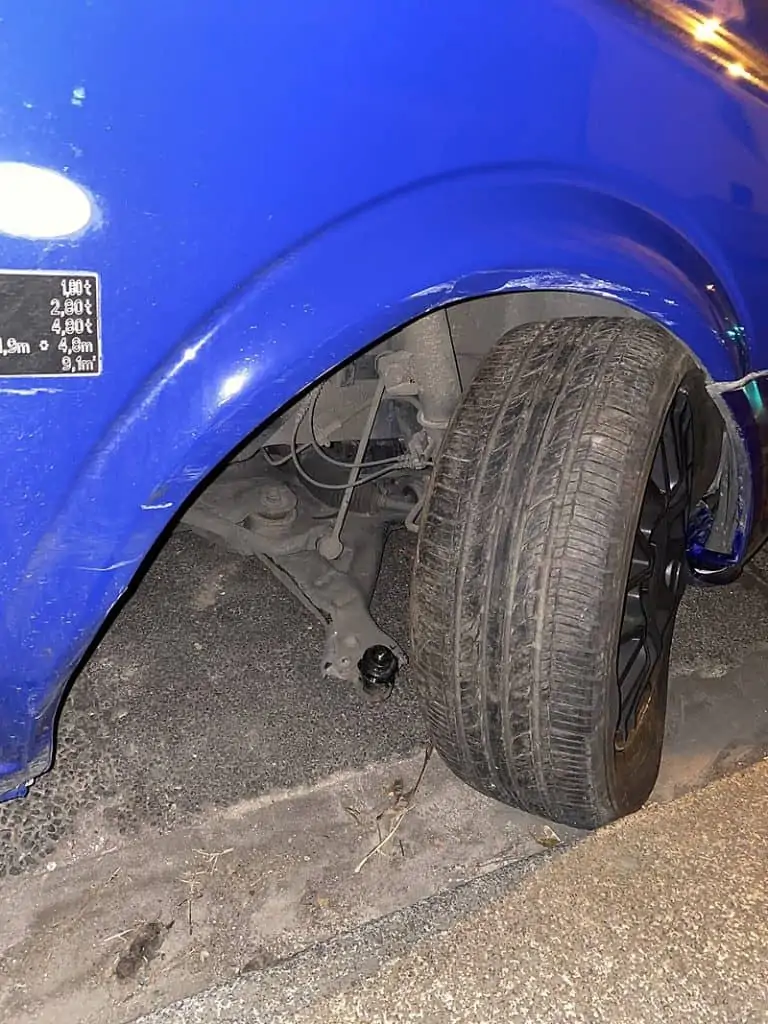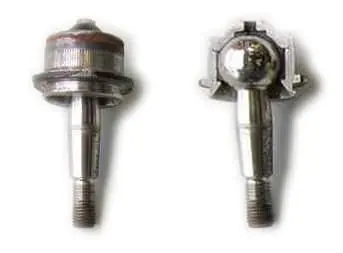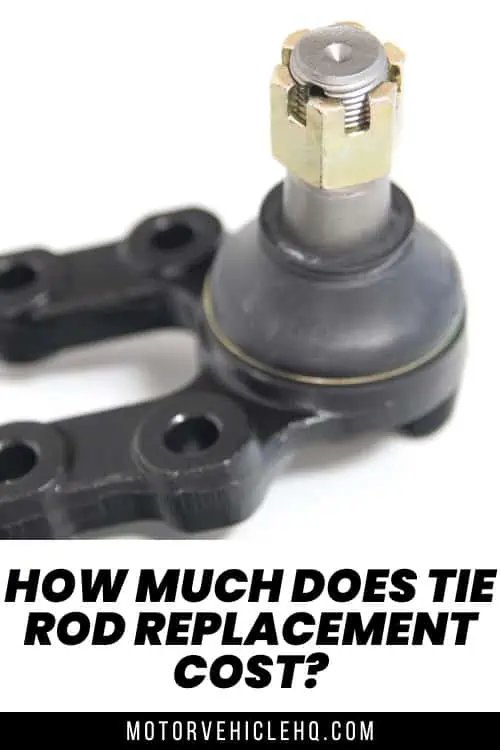It’s reasonable to assume that one component of your automobile that you don’t want to break is the steering. At least you won’t be moving if the transmission or engine is having problems. However, if the steering is broken, you’re probably moving quickly.
Without any means of directing the car’s movement or changing its course. These are the reasons why even the most minor irregularities and improper steering habits should be addressed. This then prompts us to talk more about the price of replacing tie rods.
You won’t be able to steer out of your driveway, at the very least. The worst-case scenario is that as you attempt to make a fast turn, the steering may entirely fail. As you might expect, this issue is lethal rather than just annoying.
Any vehicle’s steering system is a complicated machine with several moving parts. Why should I care about the expense of tie rod repair when tie rods are (relatively) small? Here are several justifications for you.
What Is Required of You to Know About Tie Rods?
We must first comprehend them to have a better idea of how much replacing them will cost. They are one of the more minor but no less important components of your car’s steering system, as we have already said.
They push and pull the wheels inwards or outwards to make the steering wheel revolve as you crank it.
Nowadays, the majority of automobiles use a steering system known as a “rack and pinion.” Simply put, this arrangement links the front two wheels via an enclosed tube. We discover the steering “rack,” a long, cylindrical rod within this container.
For a gear track, the rack’s top features grooves. The ‘pinion’ gear, which is next attached to the steering wheel, is reached at this point. The steering wheel’s pinion gear rotates as you turn it.
This causes the steering rack to move left or right, which causes the wheels to move in the corresponding direction. The rack and pinion system operates in two different ways. First, it transforms the steering wheel’s rotational action into a linear motion that turns the car’s wheels.
Second, the force needed to turn the automobile is lessened by this gearing arrangement. Compared to earlier methods of automobile steering, it makes it less of a burden. But… What attaches your car’s wheels to the rack and pinion system?
The tie rods, however, are located between the wheels and the rack and pinion steering. The tie rods push and pull the wheels inwards or outwards to make the steering wheel revolve as you crank it.
Where Is the Tie Rod End Located In a Car?
A front wheel hub spindle as well as the steering rack are separated by the tie rod ends. The front wheels’ rotation is managed by them.
Their other end is mounted on the inner tie rod, which is attached to the steering rack, and they are installed with bolts on the wheel hub spindle.
You may be amused to learn that some sports vehicles, like the Nissan Skyline, have four-wheel steering, which implies that their back wheels also have tie rod ends.
What are the Functions of the Tie Rods In Your Car?
Imagine, for instance, that you want to turn your automobile to the left. The left wheels would be looking outside and the right wheels would be facing inside if we observe it from above.
To provide force to the left side, the rack and pinion system would slide the steering rack. Because of this, the tie rods on the left will use that force to move your left wheels outward. Right wheel tie rods will be pulling them inward in the meantime.
You can see how crucial a part tie rods play in actually linking the wheels to the steering wheel. You won’t be able to turn without it. Tie rods are, as their name implies, rods that connect two parts.
Tie rods are used in a variety of areas outside of the automobile industry. This covers a variety of industries, such as shipping, building, and architecture. In a technical sense, a tie rod is each individual spoke of a bicycle wheel.
In an automobile, the steering knuckles’ tie rods will press against them to turn the wheels in the desired direction. The outer and inner ends of the tie rod are the two separate parts that make up the tie rod itself.
The tie rods are connected to a variety of other crucial components that are part of the steering system. It will be essential to understand this since each one may eventually fail and wear out, necessitating the necessity for tie rod replacement.
An AWD vehicle’s rear suspension by Hustvedt / CC BY-SA 3.0. Before beginning the tie rod replacement, the car’s suspension must be examined to make sure it is in good condition and will endure for a long time.
1. The Ball Bearing (or The Ball Joints)
These bearings, which are present on both ends of the tie rods, are occasionally referred to as ball joints. These spherical bearings are under a great deal of strain and stress. Additionally, it helps to balance out any vibrations experienced while driving.
This is what enables the tie rods in your automobile to continue functioning even while you are traveling through unsteady and uneven terrain. It follows that the bearings (or ball joints) inside the tie rods of your automobile experience a lot of stress. A major reason for failure is this.
2. Bushings and Rubber Dust Boots or Plastic Dust Boots
Numerous rubber boots, sleeves, and bushings have been installed around the tie rods’ exposed portions. This mostly affects the exterior tie rods. The purpose of the bushings is to protect the tie rods’ interior components from shock or debris.
It also avoids the accumulation of grit, filth, dust, or moisture inside the tie rod assembly. The bushings endure a lot of abuse since the tie rods are located on the exterior of the steering system.
3. Fittings for Grease
Grease is required to lubricate the tie rods’ bearings (or ball joints) so that they may spin easily. Grease fittings are one example of this. They are grease-filled to guarantee the least amount of friction between the numerous spinning and moving components of your car’s tie rods.
Can Tie Rods Become Defective Over Time?
Your tie rods must erupt into action and do their duties every single time you crank the steering wheel of your automobile, even an inch. Your tie rods may become damaged as a result of the wear and tear caused by this over time.
If a tie rod becomes sufficiently worn out, it may shatter and cease to function completely. The tie rods in your automobile may also have problems due to various outside circumstances.
For instance, a car accident or pothole may cause a tie rod to break in half, requiring you to pay the tie rod replacement fee that comes with mending one.
What Is the Lifespan of Your Vehicle’s Tie Rods?
You might be wondering, “How long do tie rods last?” now that you are aware of the significance of tie rods and that they are susceptible to malfunction.
You wouldn’t want to be found out letting your tie rods go too long without changing them, would you? This is a good idea, but the reality is that it’s not always simple to forecast how long a set of tie rods will endure before needing to be replaced.
Some drivers will continue to use the same vehicle for many years without ever needing to replace their tie rods.
These individuals might never need to pay for tie rod replacement. However, some people will need to repair their tie rods more than once throughout their vehicle’s lifetime. It relies on how they operate their vehicle and the sorts of environmental influences they subject it to while doing so.
The tie rods in their automobile may ultimately wear out if, for example, they often crash into potholes and don’t slow down when they do so, necessitating the replacement of the tie rods.
This is exposed by cutting the end of an inner tie rod.
What are the Common Causes of Tie Rod Failure?
It’s time to move on to why we are talking about tie rod replacement cost in the first place now that we have a better understanding of how tie rods function. How might tie rods fail since they are such crucial components of your automobile and its steering?
It all comes down to the reality that every time you drive, the tie rods in your automobile are put under a lot of stress. Fortunately, they are built and created to last for a very long period. Some automobile owners haven’t even had to replace their vehicles once.
Others must consider the expense of tie rod repair every few years or so. How come? It all depends on how you operate your vehicle. Your automobile will deteriorate more quickly the rougher you drive it.
For instance, often driving your automobile on a racetrack or going off-road. Additionally, there is the issue of how much weight or load you are placing on your automobile. Simply because of the additional bulk, heavier vehicles like trucks or SUVs can wear out their tie rods more quickly.
There are several more outside variables that you may not be able to influence. The health of your car’s tie rods will be significantly impacted by the condition of the road. Your tie rods may deteriorate more quickly than usual if you often drive over potholes, speed bumps, or bad road conditions.
Your tie rods’ surrounding components might malfunction, necessitating the replacement of the entire system. For instance, if the bushings break, moisture will be drawn into the tie rods, which will cause corrosion.
Is It Safe to Continue Driving a Vehicle with Bad Tie Rods?
Now that we have that out of the way, can you avoid paying the tie rod replacement fees? Should you continue to drive even after noticing (more on this later) that your tie rods are broken? In a word, not!
Even if they are built to last a long time, it is important to pay attention every time your automobile is serviced. Driving a car with a damaged tie rod will eventually result in many expensive repairs, at the very least.
Poor tie rods can cause uneven tire wear, as we’ll see in a moment. Those tires will soon require replacement and balance, both of which are expensive.
Additionally, because the tie rods can no longer function correctly, the remainder of your car’s steering and suspension will be put under much more stress.
Driving a car with damaged tie rods might, in the worst-case scenario, kill you and anybody else in the vehicle. Not to mention that you’ll endanger the drivers around you.
Keep in mind that you cannot steer without tie rods. Consider what would occur if it suddenly snapped while you were traveling at a high pace. If you need to make a turn or dodge anything, you won’t be able to manage your automobile anymore.
Being unable to steer might result in a very bad collision, even at modest speeds. As a result, you ought to avoid ever operating a vehicle with subpar tie rods. This is why you should pay attention if you have any probable tie rod failure symptoms.
Front double wishbone suspension. It shows the upper and the lower ball joints and a tie rod end as depicted in a rear-wheel-drive automobile .
How Much Does Tie Rod Replacement Cost?
You should now realize how crucial it is to fix a damaged tie rod as opposed to leaving it in place for a long time. However, given the price of replacing a tie rod, you might be hesitant to do so.
Given how crucial tie rods are, some individuals are particularly anxious about how much it will cost to have a new tie rod installed in their vehicle. And it turns out that their worries are well-founded.
When compared to many other car repairs, the expense of replacing a tie rod isn’t outrageous. But when having tie rods changed, you can typically anticipate spending between $350 and $475 for supplies and labor.
Furthermore, there is a good risk that a mechanic could uncover more serious problems with your car’s steering rack when examining the tie rod problem, which might cost you a lot of money. The average cost of replacing a steering rack ranges from slightly over $1,700 to approximately $2,100.
You probably won’t have to spend that much money if it’s only a simple tie rod issue. However, it’s worth remembering in case your technician calls and informs you that you require more than just a tie rod repair.
What are the Benefits of Contemplating a Tie Rod Replacement Cost?
Tie rods are crucial to maintaining the smooth operation of your automobile. You won’t enjoy driving if your tie rod ends aren’t working correctly.
With extensive use, your car will handle badly, putting you in a risky scenario that might result in an accident or breakdown.
If the tires, as well as alignment, are all in good shape, your car’s lifespan will be increased. The alignment deteriorating would be a sign of faulty tie rods. Bad tie rods cause the automobile to wear down more quickly, then you should have them fixed before this happens to save money.
What Signs and Symptoms of a Bad Tie Rod Should You Be Aware Of?
Now is a good time to delve into more detail regarding the symptoms that prompt us to consider the expense of tie rod repair. So far, we’ve discovered that tie rods can be fatal if and when they break. However, how can we tell if anything is likely to go wrong?
How can we tell if the tie rods in your automobile are about to fail before it’s too late? The good news is that you can determine if your tie rods are acting up in at least a few simple ways. It’s a good idea to commit things to memory.
1. The Steering Wheel Experiences Vibrations and Shakings
Uncomfortable shaking and vibrations from your steering wheel are one sign that you may need to consider the tie rod replacement cost. A “loose” tie rod is to blame for this. In other words, there is no longer a secure connection between the steering system and the wheels due to the tie rod(s).
The Female Heim Joint by Masonjan / CC BY-SA 4.0 Depending on how the threading is made, a tie rod end bearing can be categorized as either a male or female helm.
Since the linkage is no longer strong, you may immediately sense vibrations or shaking coming from the wheel when this happens. When turning or driving quickly, the shaking and vibrations get worse.
However, not just the steering wheel may experience these vibrations. Additionally, you could sense vibrations coming from below the automobile as a whole. This is more relevant to an additional sign of broken tie rods: uneven tread wear.
Your automobile won’t drive as smoothly or evenly as it used to because one side of the tires is more worn than the other. Not only are these vibrations annoying, but they may also accelerate the wear and eventual failure of the tie rods.
2. A Steering Wheel That Feels Loose
In keeping with what we said before, if the tie rods are no longer securely fastened, the steering may feel a little sloppy. This implies that you have a sense of excessive play when you crank the steering wheel.
The automobile appears to be rotating very little when you make frequent turns to the left or right of the steering wheel. There is a serious shortage of opinions and suggestions. This looseness is a clear indication that something is wrong with the tie rods in your car’s steering.
3. Unusual Sounds While Turning
Audio cues may also indicate the existence of a failing tie rod. As you crank the wheel, you can hear clunking, squeaking, or screaming noises. This is frequently a clue that your automobile has some metal-on-metal contact.
Trying to identify its source is the sole challenge. If it occurs when you are turning, a broken tie rod can be to blame. This noise’s primary source is probably a lack of lubrication brought on by a broken grease fitting or rubber boot.
4. While Driving, the Car Veers to the Left or Right
The tie rods maintain the alignment of our automobile in addition to the steering. The alignment of your car’s front end may become loose if the tie rods are getting close to the end of their useful life.
When this occurs, even if you are pointing straight ahead, you can notice that your automobile is abruptly drifting off to the left or right on its own.
To verify this, drive in a straight line while letting go of the steering wheel. If it travels in any direction other than straight ahead, it could have a broken tie rod.
5. Irregular Tyre Treadwear
After some time, the tires on your automobile will eventually become worn down and degrade gradually. That is typical. Observing one tire degrade more quickly than the other is abnormal. For example, the front right tire may appear to be more worn than the front left tire.
More often than not, the big contact area in the center of the tire experiences less treadwear than the inner or outer borders. If you’re having this problem, your suspension or steering is unquestionably broken.
The bearings (or ball joints) inside the tie rods of your automobile experience a lot of stress and this is a major reason for their failure.
What Can You Do to Reduce the Cost of Tie Rod Replacement?
It will often cost you a lot of money to replace a damaged tie rod. However, there are a few alternative methods you might be able to cut costs on tie rod repair if you ever need it.
To begin with, you may regularly check your tie rods and look for early warning indications of damage to prevent minor steering and alignment issues from escalating over time.
If you are familiar with cars and have the necessary equipment at home, you may also try to repair the tie rods yourself.
Is It Worth It to Incur the Tie Rod Replacement Cost?
Driving a car with a damaged tie rod is quite dangerous, as we’ve already discussed a few times. It might put you and others at risk, so you shouldn’t ever do it for longer than is necessary.
However, if you don’t think it’s necessary, you shouldn’t immediately have a tie rod changed. There are instances in which replacing a tie rod in an automobile won’t make sense.
The expense of installing a new tie rod will be the least of your concerns if your automobile is older and has additional steering and alignment issues. In this case, you should bite the bullet and replace your tie rod.
Even after tie rod repair, the same steering and alignment problems will persist. Additionally, you might want to refrain from replacing tie rods on a car with significant issues unrelated to steering and alignment.
If your automobile will still be plagued by other problems after spending a few hundred dollars on a tie rod fix, what good is it?
Self-Checking the Tie Rod Ends
If you experience any of the aforementioned symptoms, it would be wise to get the car examined by a mechanic.
But you may first check to see whether your tie rods are loose by holding a front wheel by the sides and simultaneously pushing and pulling to see if the wheel has any play.
To check for laxity, you may also grab the tie rod and wriggle it. Extra mobility is abnormal, and rapid repairs are required.
How are Tie Rod Ends Replaced?
To replace your tie rod ends, follow these procedures.
Step 1: Lift the car and use steel safety supports to hold it.
Step 2: Take off the wheel and tire assembly.
Step 3: If you can, gauge the tie rod ends’ lengths and make a note of them. If the new tie rod is the same length as the old one, alignment will be simpler.
Step 4: By adjusting the lock nut or sleeve, the tie rod end may be locked. The tie rod ball-stud may be taken out of the steering knob using a tied-end removal tool. The tie rod can be unthreaded once it has been severed from the inner tie rod’s end.
This enables the tie rods in your automobile to continue functioning even while you are traveling through unsteady and uneven terrain.
Step 5: The tie rod steering shaft boot must be taken off to replace an inner tie rod in a rack-and-pinion steering system. When that is done, the tie rod has to be unthreaded from the steering rack or the outer tie rod end.
Step 6: Tighten the adjusting lock nuts to the OEM torque setting after installing the replacement tie rod end and all fasteners. Use the tie rod’s length after it has been removed to help line the wheels.
Step 7: With a few exceptions, the alignment of your vehicle must be inspected, measured, and set to factory standards each time a suspension component is removed or replaced. Some mobile mechanics have the tools necessary to use portable equipment to carry out mobile alignments at your site. However, the last stage will probably include taking the car alignment to a nearby alignment shop for measurement and changes.
What Should You Consider When Contemplating the Tie Rod Replacement?
On motor vehicles, tie rod ends need to be changed in pairs. Although each tie rod end is repairable, it’s crucial to replace a pair at once since most cars have four tie rod ends, two on each side, and if one breaks, the more exposed outer ones are more likely to follow suit.
After your vehicle has undergone repairs, you should check to see if it is aligned by either giving it a test drive or taking it to a technician who specializes in alignments.
Get a printout of your car’s alignment settings both before and after the alignment is completed when you have an alignment done. The automobile will be aligned to the factory settings, not the permitted values, by a reputable alignment facility. Before beginning the alignment, the company will examine the car’s suspension to make sure it is in good condition and will endure for a long time. The alignment will be good and last a long time if the tires are not worn unevenly.
The Conclusion
You may attempt doing this at home if you’re eager to avoid having to pay high replacement costs for tie rods. It’s one of the easier vehicle repairs you can handle on your own.
However, because you’ll be repairing your car’s intricate steering, we’ll only suggest this to someone who is a little more mechanically skilled.
All things considered, the invoice you will receive from the nearby mechanic isn’t too awful. Tie rods are reasonably priced given how crucial they are.
For the majority of individuals, it’s advisable to make an effort to reduce or eliminate the need for tie rod repair in the first place. Despite how straightforward they are, tie rods have been carefully designed to almost last the whole life of the vehicle.
Your car’s tie rods may last a lifetime if you take good care of them. They perform their tasks invisibly, consistently, and at ease. Never put off a replacement, though, when they do need to be done. Choose between a hundred bucks and your life.
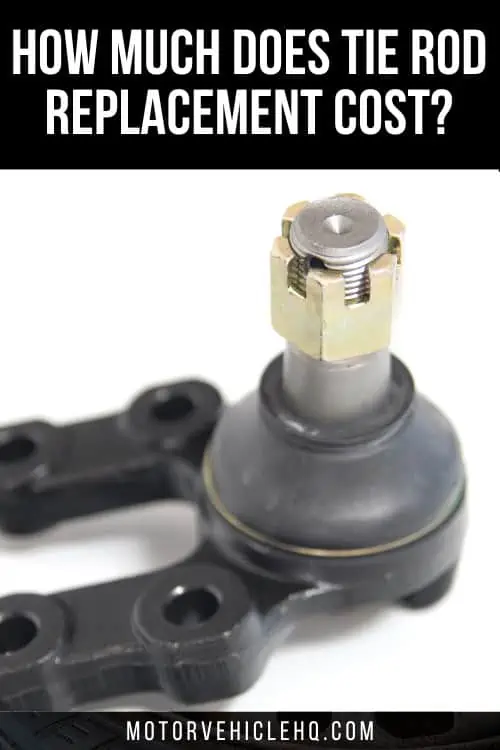

Nyangano Maurice specializes in vehicle troubleshooting and has more than 10 years of experience in the automobile industry. Over many years of experience as a car mechanic, he has acquired a broad range of skills, including engine repair, brake systems, electrical systems, and more. He frequently hosts community workshops and training programs to help motor vehicle owners understand their vehicles better.
